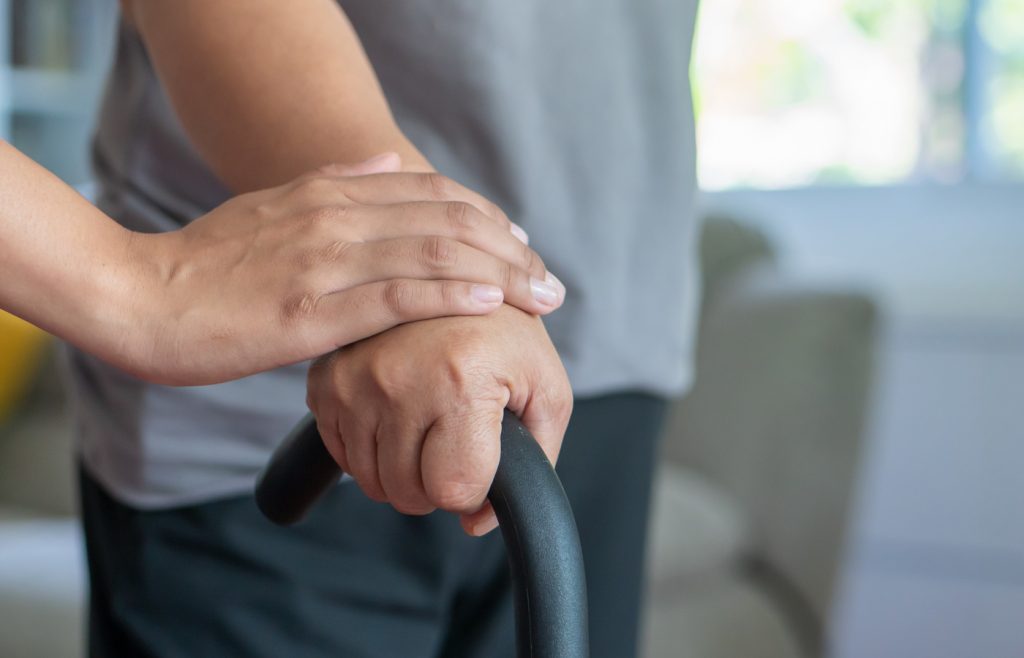April 11th was chosen as World Parkinson’s Disease Awareness Day. Parkinson’s disease affects about 9 million people worldwide. It is the second most common neurological disease after stroke. In Brazil, anticipation of population aging may increase its frequency.
At age 30, retired scientist Danielle Lanzer began feeling shaking in her left hand shortly after surgery for appendicitis. “It wasn’t visible, but it hindered my work in the lab.” Today, at the age of 46, Daniela was diagnosed with Parkinson’s disease, a neurodegenerative disease that affects about 2% of the world’s population. In Brazil alone, there are about 500,000 people living with the disease.
The road to learning about Parkinson’s disease was long: it took six years of many tests and misdiagnosis. “I was diagnosed with essential tremor and depression and even suspected Wilson’s disease,” Danielle says. When he met a movement disorder neurologist, he discovered it was Parkinson’s disease. But the symptoms are already affected. I had a lot of difficulties even with regard to self-care: I could not wash my hair myself, I could not brush my teeth, depending on the type of clothes, I could not get dressed. Need help cutting meat. Basic things that, sometimes, I just can’t do. It was causing me depression.”
Cases like Danielle, who started showing symptoms at age 30, are rare. Most often, Parkinson’s disease begins to appear after the age of 60. “It is a disease associated with aging of the brain,” notes neurologist Roberta Saba, coordinator of the scientific division of movement disorders at the Brazilian Academy of Neurology.
The specialist explains that there is no specific reason for the development of Parkinson’s disease: “There is a combination of genetic and environmental factors that can cause an individual to develop Parkinson’s disease or not.” Parkinson’s disease develops from a deficiency in the production of dopamine, a neurotransmitter that transmits nerve currents throughout the body.
Selita Machado, a resident of Itabashi (GO), believes that a genetic factor influenced the development of the disease. Five years ago, at the age of 64, he began to have pronounced hand tremors associated with forgetfulness and a sore throat. The muscles of the throat are already becoming more rigid, and therefore they are followed up by the speech therapist as well as physical exercise. “The day I do Pilates I feel so much better,” says the retiree.
In Brazil there are only 16 organ donors per million people
COVID-19: the moving average of deaths returns to the beginning levels of the micron wave
Much more than tremors
Parkinson’s tremor does not result from any movement, but also appears when a person is at rest. “Not everyone who shiver has the disease and not everyone who has Parkinson’s disease shiver,” the neurologist explains.
In the case of Daniel Lanzer, there is no tremor, but rather slowness of movement, a symptom that is present in every Parkinson’s patient. There may be changes in the voice, a person changes writing, there are changes in both the motor part and the way of walking. In addition, there may be changes in sleep and depression. Symptoms start out very subtle and progress slowly. As a result, people get used to these adjustments, and sometimes, after a year or two, they realize that something is wrong and seek medical help,” says neurologist Andrei Sobirajki, member of the Brazilian Academy of Neurology.
Parkinson’s disease symptoms
- shivering
- tetanus
- slow movements
- body pain
- changes in walking (walking)
- Sleep changes (disturbed sleep, talking in your sleep, having sudden movements)
- Dizziness
- depression
- difficulty in smelling
- memory loss
treatment or treatment
Parkinson’s disease is a disease that has no cure. “I actually tell my patients that they are not going to die from Parkinson’s disease. This is because Parkinson’s disease does not cause death, but the development of symptoms and muscle weakness can lead to falls and pneumonia,” says Dr. Roberta Saba.
There are specific medicines to treat Parkinson’s disease specifically such as Alevodota and Prolopa (levodopa + benserazide). But a patient who has the disease usually uses concomitant medications to treat symptoms, such as anxiolytics and pain relievers. Interdisciplinary therapy, in addition to a neurologist, the presence of a speech therapist, physical therapist and psychologists is common.
“It’s a disease that takes time and a lot of investment,” Danielle says. Ademar Vasconcellos is 72 years old and was diagnosed with Parkinson’s disease in 2018. In addition to his health plan, he typically spends around R$2,000 per month on medications, cranial magnetic stimulation, and medical fees. “Since the disease is degenerative, it turns into a struggle. As long as the medication is in effect,” Vasconcelos says.
Danielle says she has learned to live with the disease and that there are better days and more pain. Today, in addition to treatments, she also practices singing. “It generates a lot of pleasure, and when you feel happy, some cells in the nervous system end up producing dopamine. So, it helps me a lot and improves my voice and cancels out,” he says.
At the onset of symptoms, Danielle had great difficulty in social life. “You feel inferior for not having the same skills and conditions to do activities at home or at work.” Today, having already adapted, she is one of the responsible for the movement “Shaking with Parkinson’s diseaseThrough the movement, they were able to repeal a 2017 regulation that eliminated the benefits of devaluing medicine to treat disease for people under 50.

“Wannabe internet buff. Future teen idol. Hardcore zombie guru. Gamer. Avid creator. Entrepreneur. Bacon ninja.”







More Stories
Science now knows how Taylor Swift concerts cause an 'earthquake'
Garcia, Velha and Itoupava are the AGFs that will open this weekend
Fun Science: Spark kids' environmental curiosity with fun science experiments